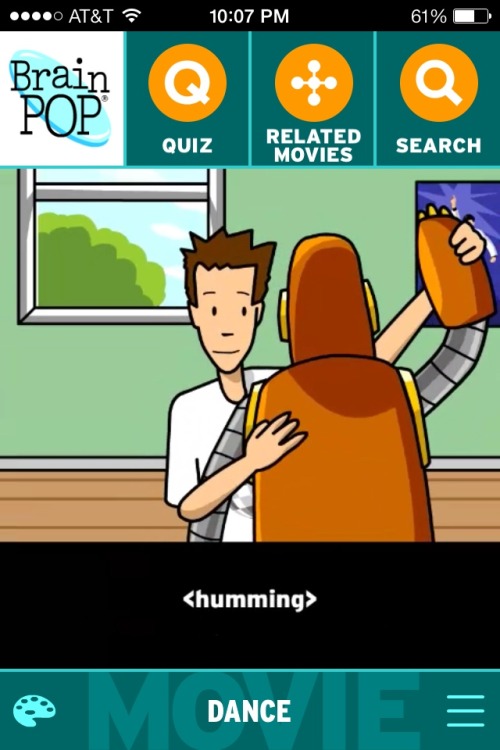

"Far and few, far and few, Are the lands where the Jumblies live: Their heads are green, and their hands are blue And they went to sea in a sieve." TIM: Rhyme is the repetition of similar sounds, usually at the end of lines of poetry. TIM: Right, right, I was just getting to rhyme. Tim is sitting at the computer with Moby beside him. The word 'ye' is highlighted red at the start of the third and fourth lines. The words 'relentless' and 'repentant' are both highlighted orange. TIM: You can see the first two lines start with a three-syllable word beginning with the letter "r", and the use of "ye" repeats at the start of the second two lines. TIM: You'll notice that repetition comes into play here. The image of Alexander Pope appears at the bottom of the screen.

TIM: The rhythm of a poem in iambic pentameter goes, "ba-BUMP, ba-BUMP, ba-BUMP, ba-BUMP, ba-BUMP." "Relentless walls! whose darksome round contains repentant sighs, and voluntary pains: Ye rugged rocks! which holy knees have worn Ye grots and caverns shagg'd with horrid thorn!" That's her anthem. You grits and caverns shagged with horrid thorn! You rugged rocks! which holy knees have worn Text reads: Relentless walls! whose darksome round contains The dots continue to alternate in color as the dot bounces across them.Īn Alexander Pope poem appears on screen and the bouncing ball dot jumps across the words as it did with dots before. The first dot becomes yellow and the second turns red. A bouncing ball dot appears on screen to jump across the top of each dot. Ten dots appear at the bottom of the screen. TIM: That's a popular type of meter with ten syllables per line, and with every unstressed syllable followed by a stressed syllable. He is wearing a turban and a shirt with a thick, white collar. For example, the English poet Alexander Pope wrote in iambic pentameter.Ī man dressed in clothing from another century is shown.

TIM: Meter takes into account how many syllables are in each line, what the pattern of stressed and unstressed syllables is-stuff like that. TIM: You can measure a poem's rhythm with something called meter. Their heads are green, and their hands are blue Poetry, on the other hand, usually emphasizes artistic elements like rhythm, rhyme, and repetition.Ī simple picture of small people in a crude boat at sea is shown juxtaposed with the staggered lines from a poem by Edward Lear. TIM: It expresses ideas in simple, direct language. Text from a Sherlock Holmes story is shown on the screen. Tim is in the room talking to the camera with Moby beside him. Ordinary writing, like you'd find in a textbook, newspaper article, or novel, is called prose. TIM: Poetry is any writing that uses words for their sound and rhythm as well as their meaning. A woman is shown belting out a song from the earphones of a boy who is dancing. Humpty Dumpty is shown falling from his brick wall within the speech bubble of a mother talking to her daughter. From the nursery rhymes you learned as a kid to the song lyrics you listen to now, your head is probably filled with poetry.

Chances are you're already pretty familiar with some forms of poetry. TIM: Dear Tim and Moby, what can you tell me about poetry? From, Gabriella. The email reads "Acme email - inbox From: To: Subject: poetry". His computer alerts him that he has a new email. The lights come on to reveal Tim sitting at his computer desk in a room with Moby at his side. He is shown in various poses talking to the camera. TIM: I saw the robots of my generation destroyed by bad programming, beeping hysterical wiring themselves in the garage at dawn looking for an AC adapter the absolute heart of the lithium-ion battery, guaranteed to run for a thousand years. Tim reads to the camera in a spot light, wearing a black beret. Onscreen text reads: The Mysteries of Life with Tim and Moby.


 0 kommentar(er)
0 kommentar(er)
